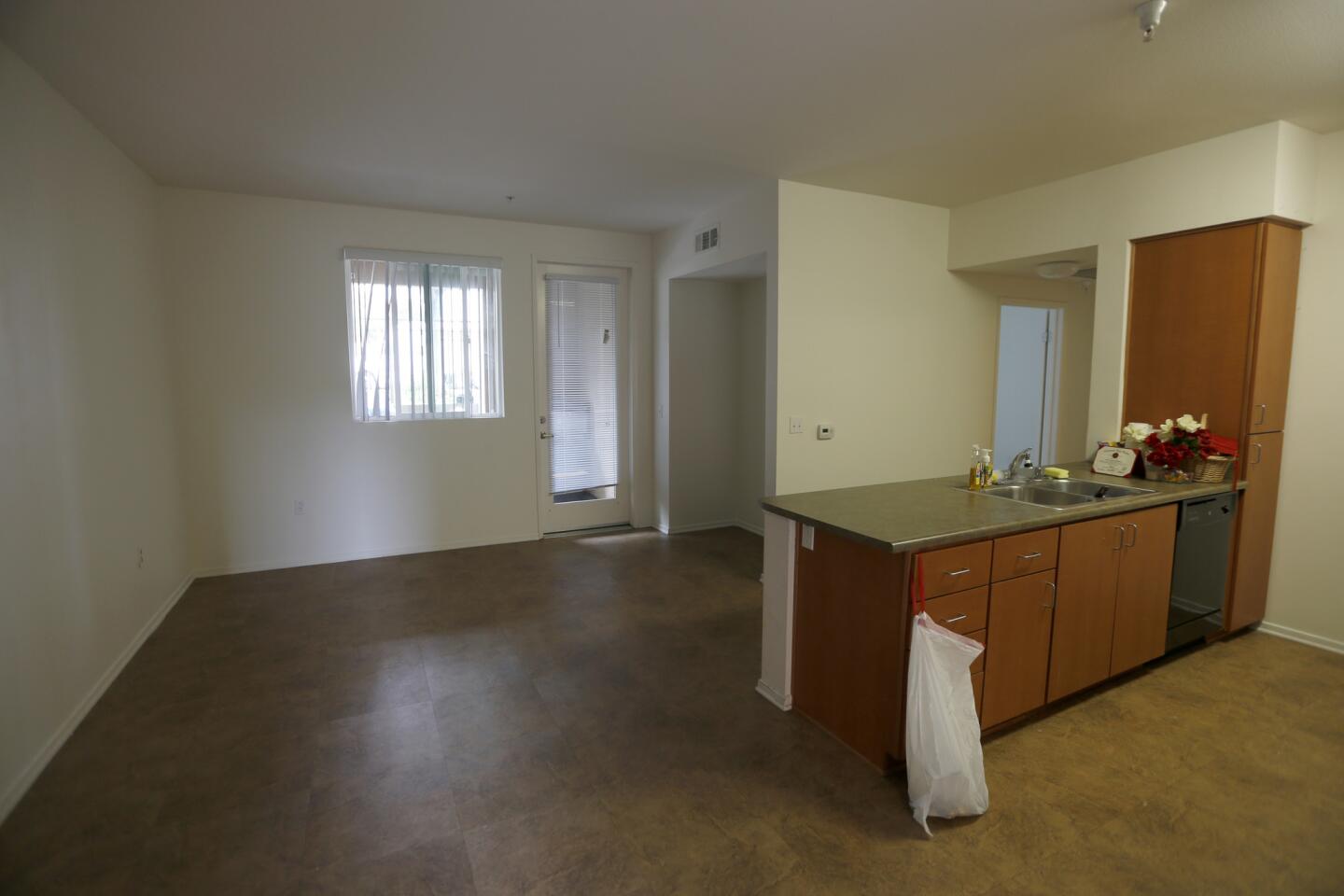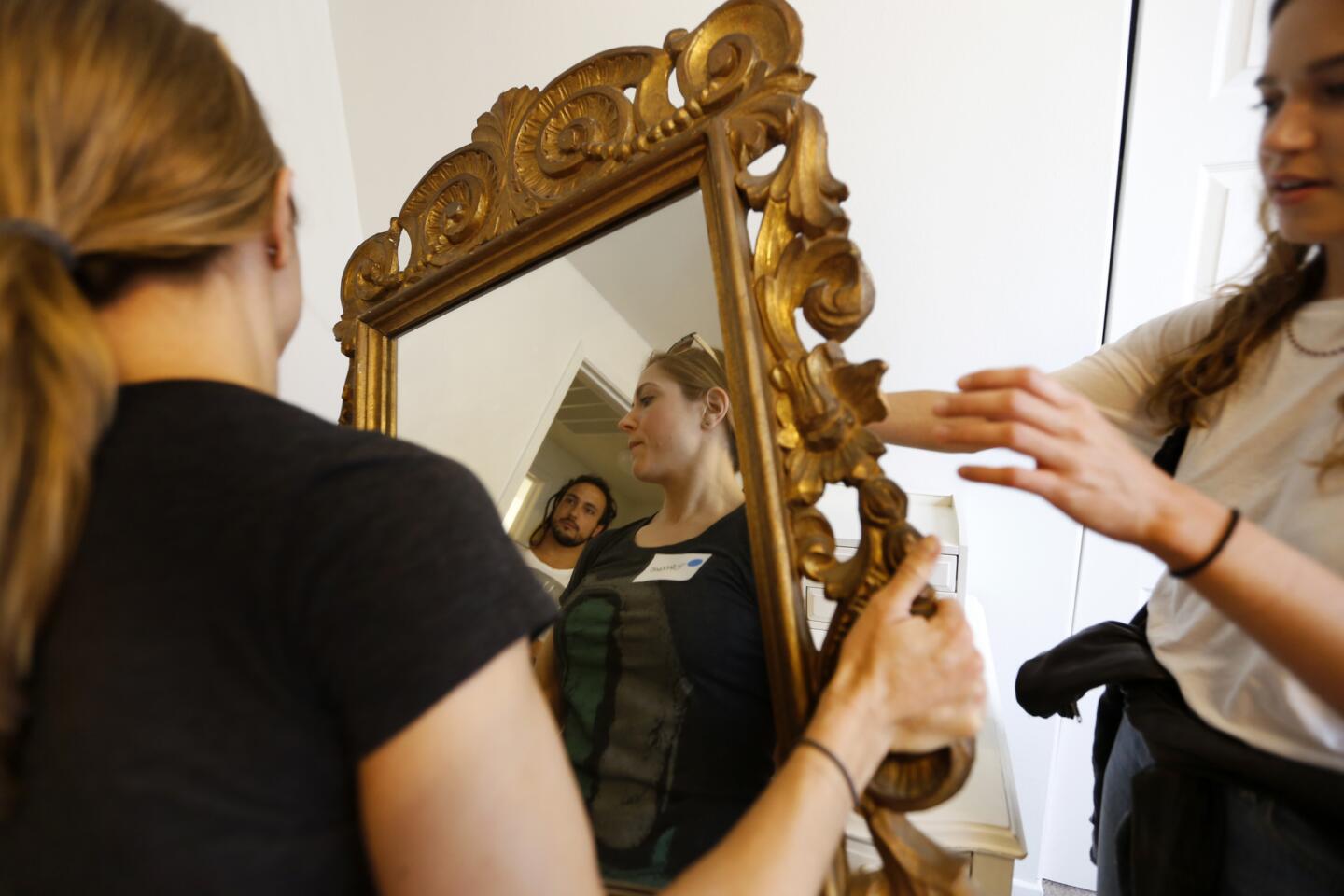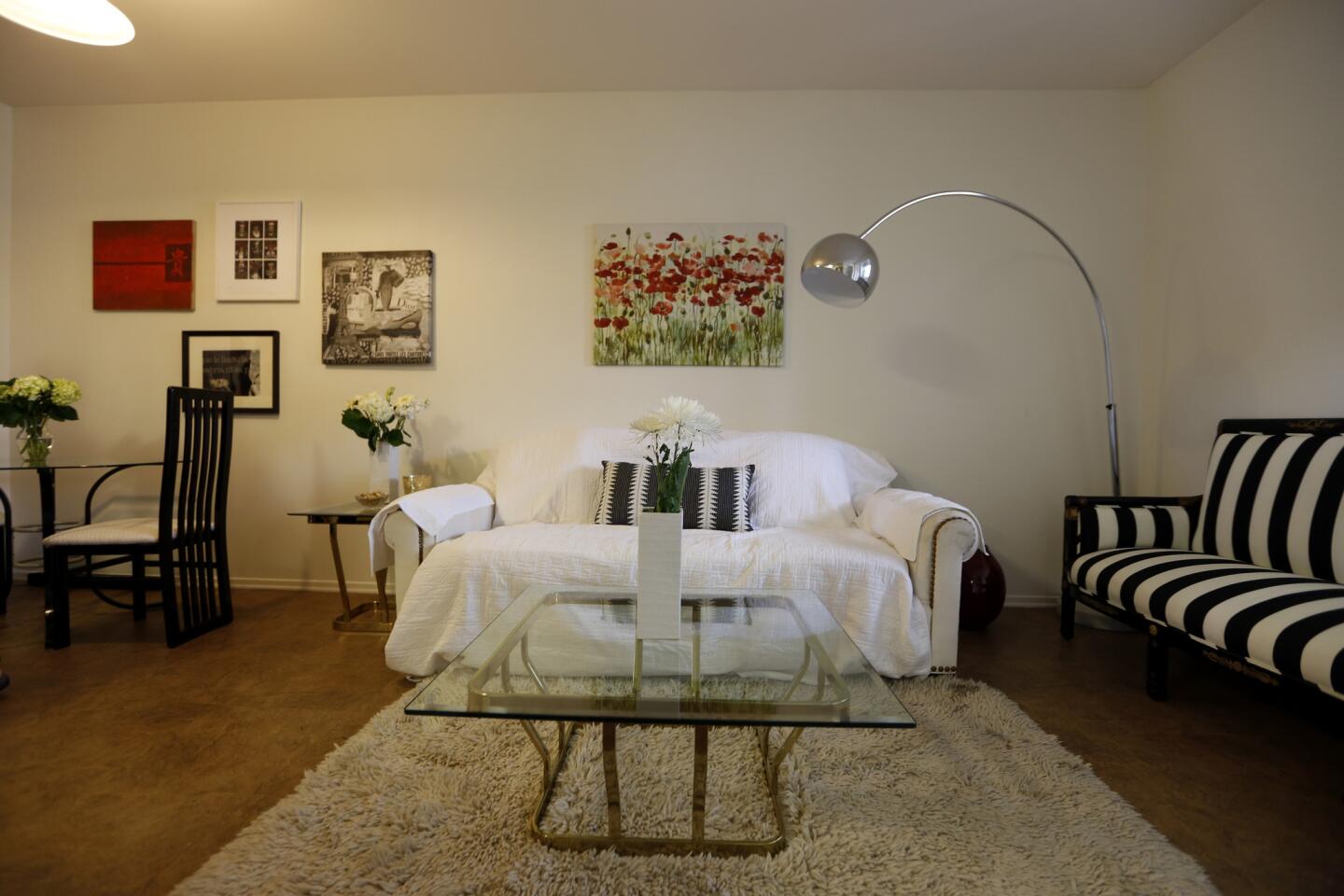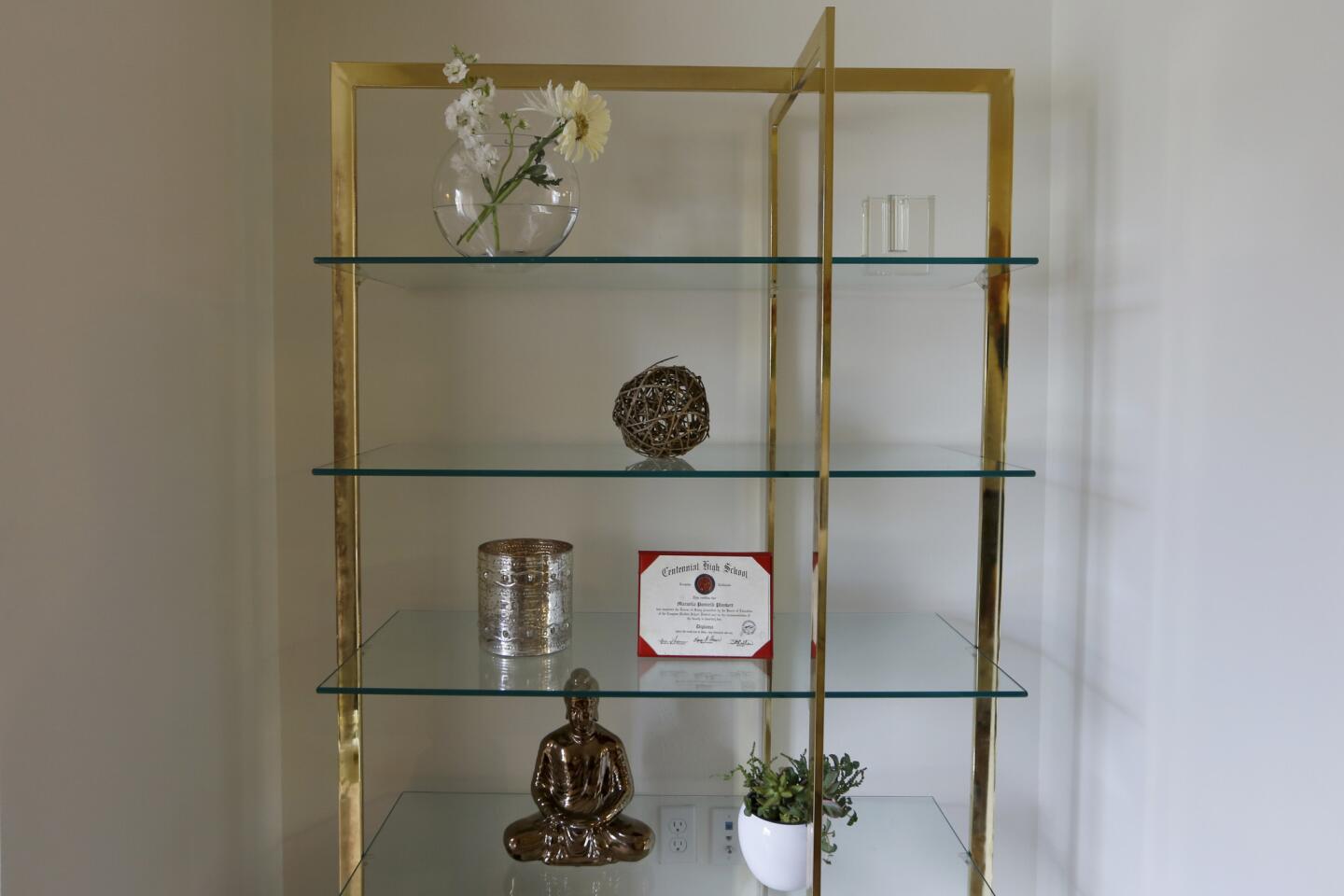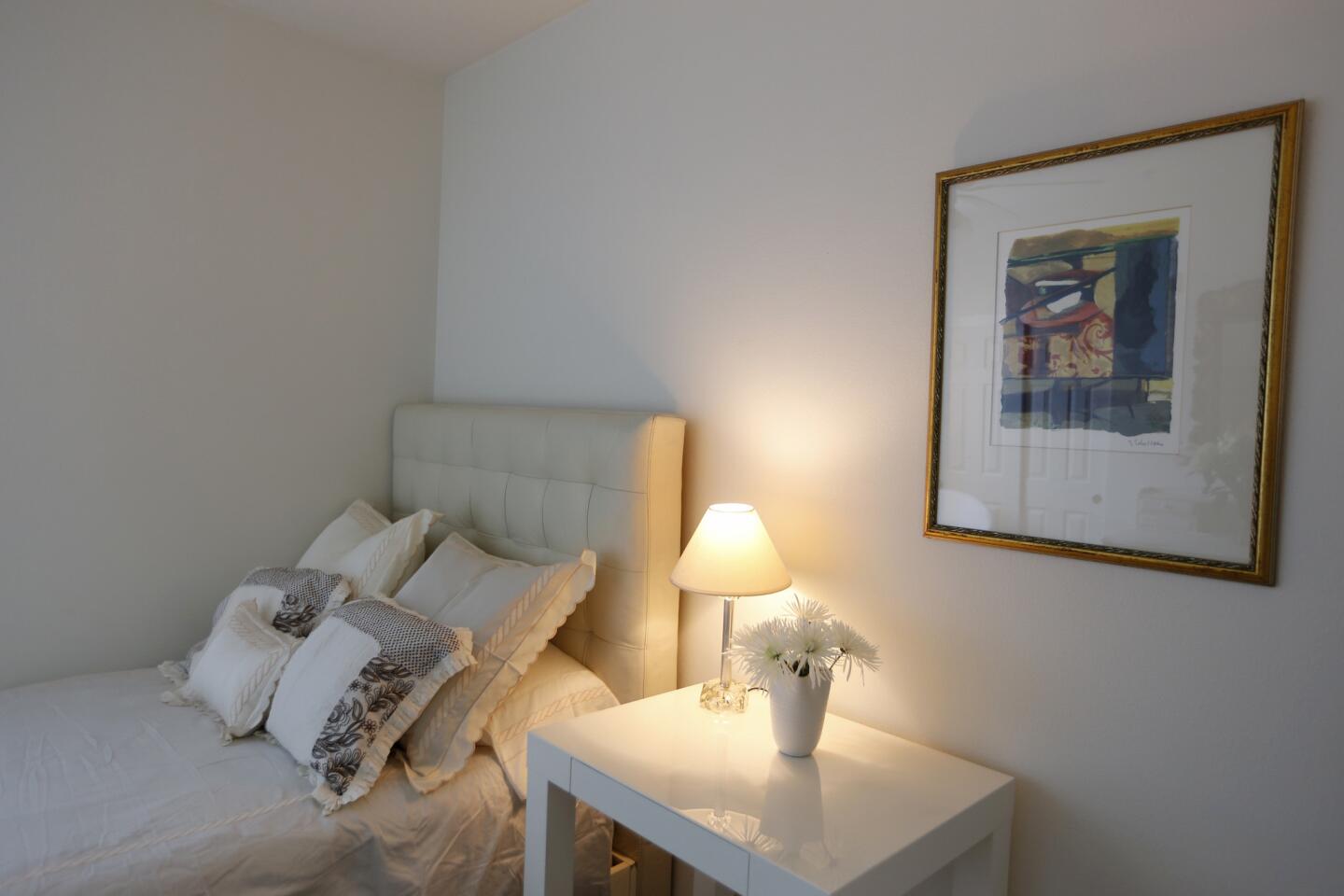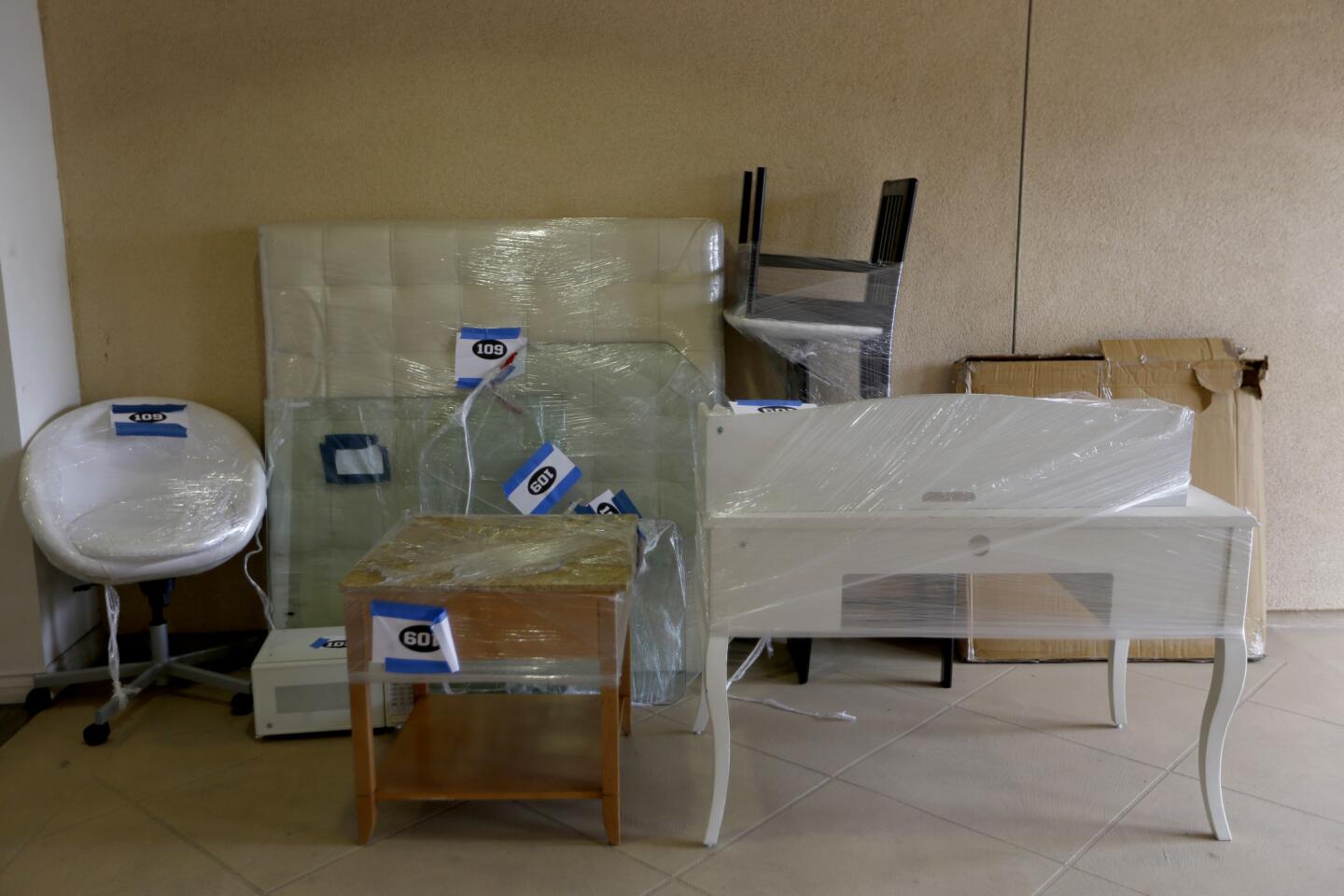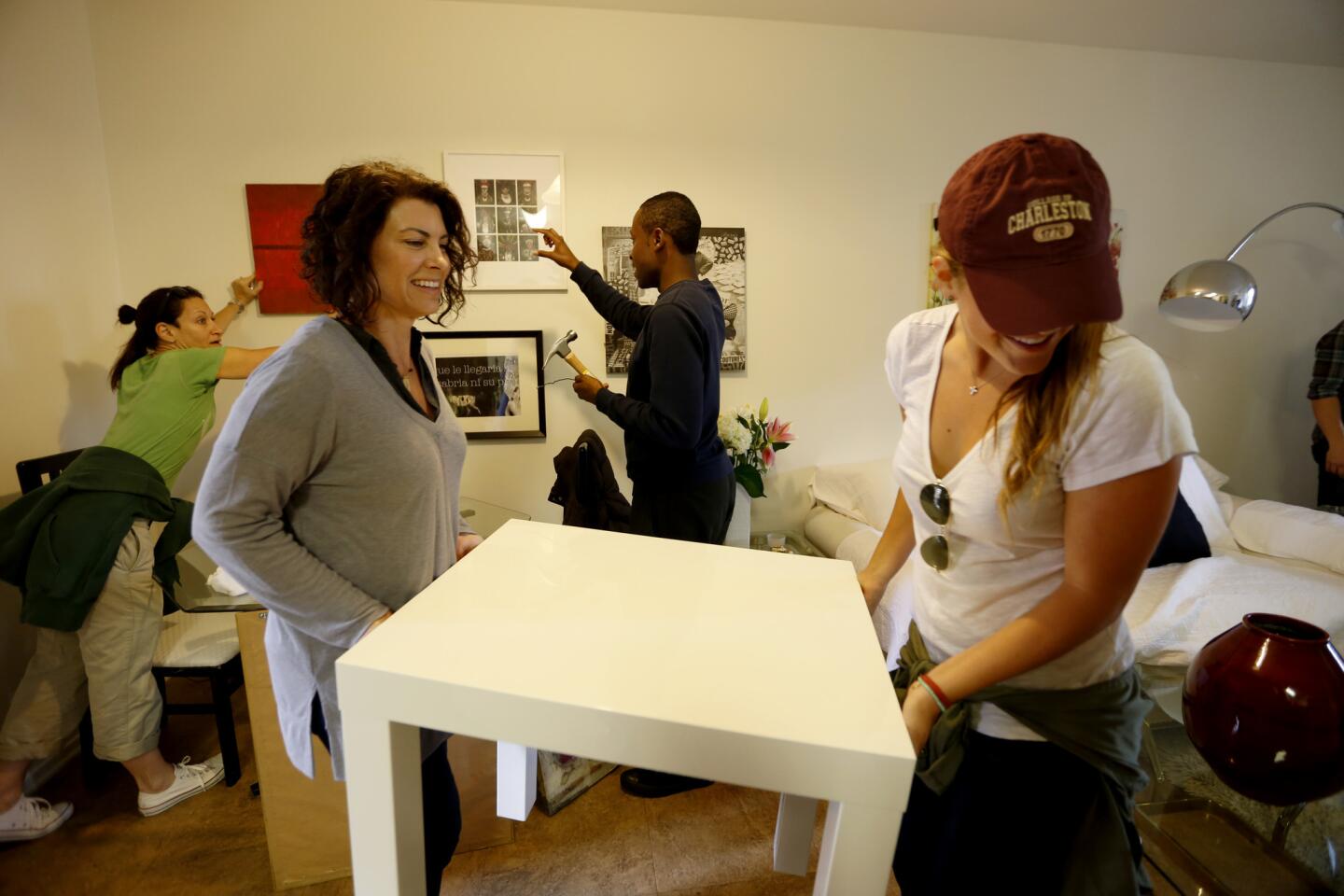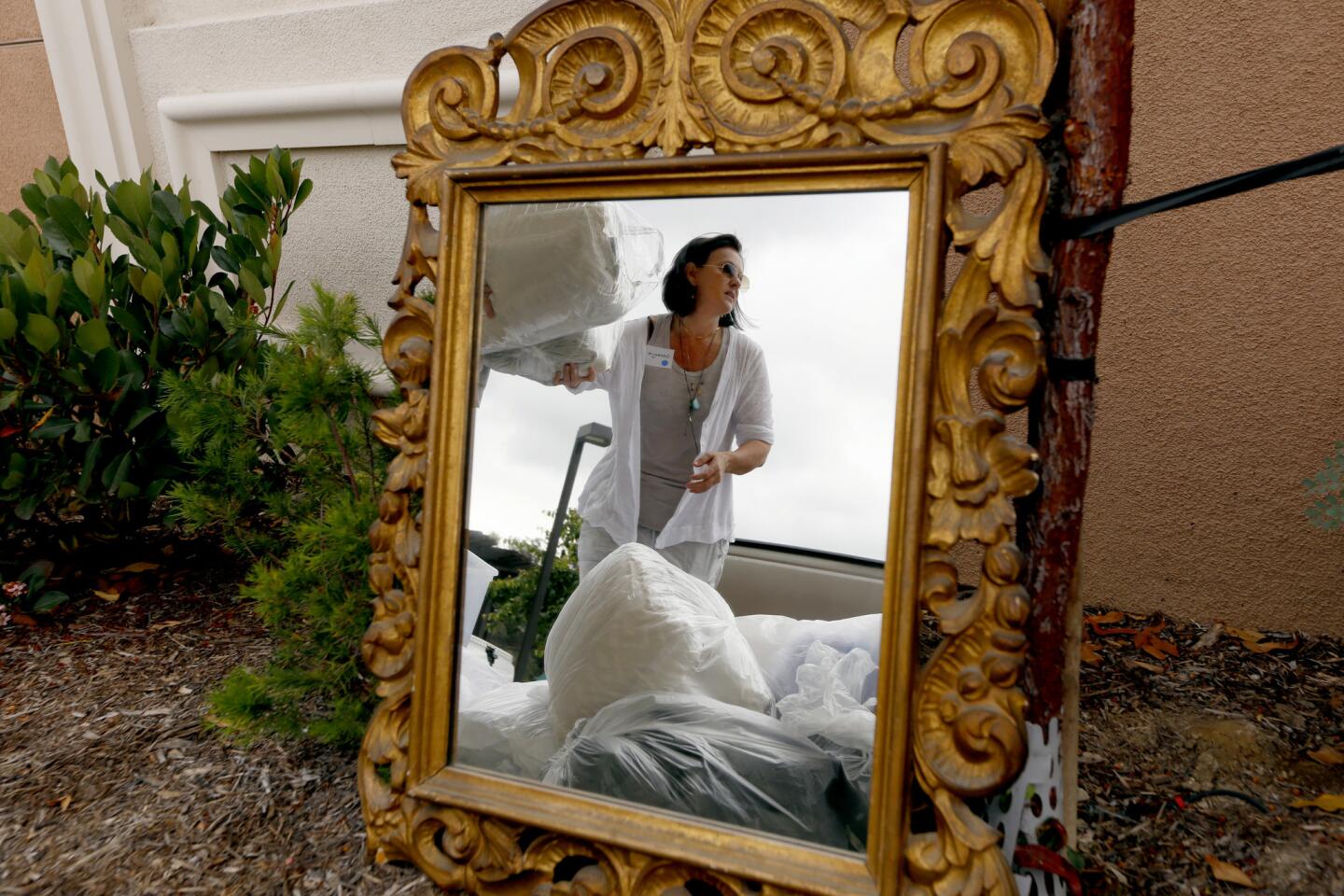How a group of strangers helped a former foster child create the home of her dreams

- Share via
It’s the last night 24-year-old Max Plunkett will have to sleep on the floor … or so she sincerely hopes.
Plunkett has lived in 20 foster homes since she was a baby. But Plunkett, 24, is one of the lucky ones. She survived the system that finds 24% of aged out foster care youth in Los Angeles County experiencing homelessness within two years of leaving the system.
In the years since leaving foster care, Plunkett lived in transitional group housing, couch surfed and stayed with her boyfriend’s family for a while. Today, Plunkett, is enrolled in Los Angeles Southwest College, studies business and dreams of opening an art center to help at-risk youth.
Earlier this month, she moved into her own Section 8-funded apartment in Los Angeles. Her first night was spent sleeping on the floor. But the apartment wasn’t empty for long, thanks to interior designer Georgie Smith and her volunteers from A Sense of Home, a local charity that helps former foster children set up their own homes with donated furniture and housewares.
“It all started as a random act of kindness” in 2014, according to the charity’s co-founder and Smith’s life partner, Melissa Goddard. An aged out youth saw the designer’s work on Facebook and sent a message: “Do you think Georgie could help me?”
They met with the youth: “He was eating and studying on the floor … everything he owned was in black garbage bags,” recalls Smith. The duo sprang into action, rallying their network of friends through social media. By the end of the day they had everything they needed to turn his apartment into a home. “Each friend,” said Smith, “gave him a piece of furniture, a hug, a wish for his future.”
Soon, there were others. “The need was so great,” said Smith. “I was stunned there was no program for these kids to turn to. When they are forced to leave the system at 18, they have almost nothing and no family to call for help.” Smith and Goddard charged forward: Someone gave them money for a moving truck, another, warehouse space to house the furnishings that just kept coming from donation efforts.
The charitable foundation requires only three things from the youth: They have an apartment and are either in school or work. And they must “pay it forward,” helping as part of the team to create another youth’s home. “It’s a way for them to become immersed in community,” said Smith, whose goal is to furnish the apartment as a place for the aged out youths to thrive, but also to offer them networking opportunities as they begin to look for career opportunities.
Decorating Plunkett’s apartment earlier this month marked the 100th “home creation” the organization has completed in nearly two years. (They are always on the lookout for “gently used” furniture and housewares, which can be donated through their website. And they work with vendors to provide new mattresses and refrigerators.)
The ritual typically begins on a Friday when Smith meets with her team, including volunteers, and former foster youths who run part of a warehouse brimming with donated furniture and household items. They discuss a design vision for the new living space and select items that fit the bill.
Sundays are a blur of activity.
The loaded up moving truck arrives. Smith directs. Hands spring into action. Volunteers lug in furniture, assemble the bed, roll out rugs, hang pictures ...
Many volunteers also bring flowers and cookies, “so it feels like home,” she said.
Ninety minutes later the apartment space is transformed.
Anyone with a small apartment and a limited budget will appreciate Smith’s eye for design.
“The sofa is our basic building block,” Smith said.
“Colors are kept mostly solid because that offers more flexibility — you can add pattern and color in pillows and artwork. Keeping furnishings in the same family of materials — all light or dark woods or painted white — makes it look like it was all meant to go together. And if there are no children, I love white interiors — like the one we gave Max. It’s fresh, clean and white makes small spaces appear bigger.”
A poet and painter, Plunkett pronounced her pearly-hued interior with black accents “elegant and modern.”
She plans to hang some of her own artwork but paused to gaze into the bedroom where the bed was dressed with pretty linens and a vase of flowers sat on the nightstand.
“When you’ve been homeless, you know that home is so much more than a roof over your head,” she said. “I’m so looking forward to sleeping in a bed tonight.… I’m going to sleep like a princess.”
To read the article in Spanish, click here

